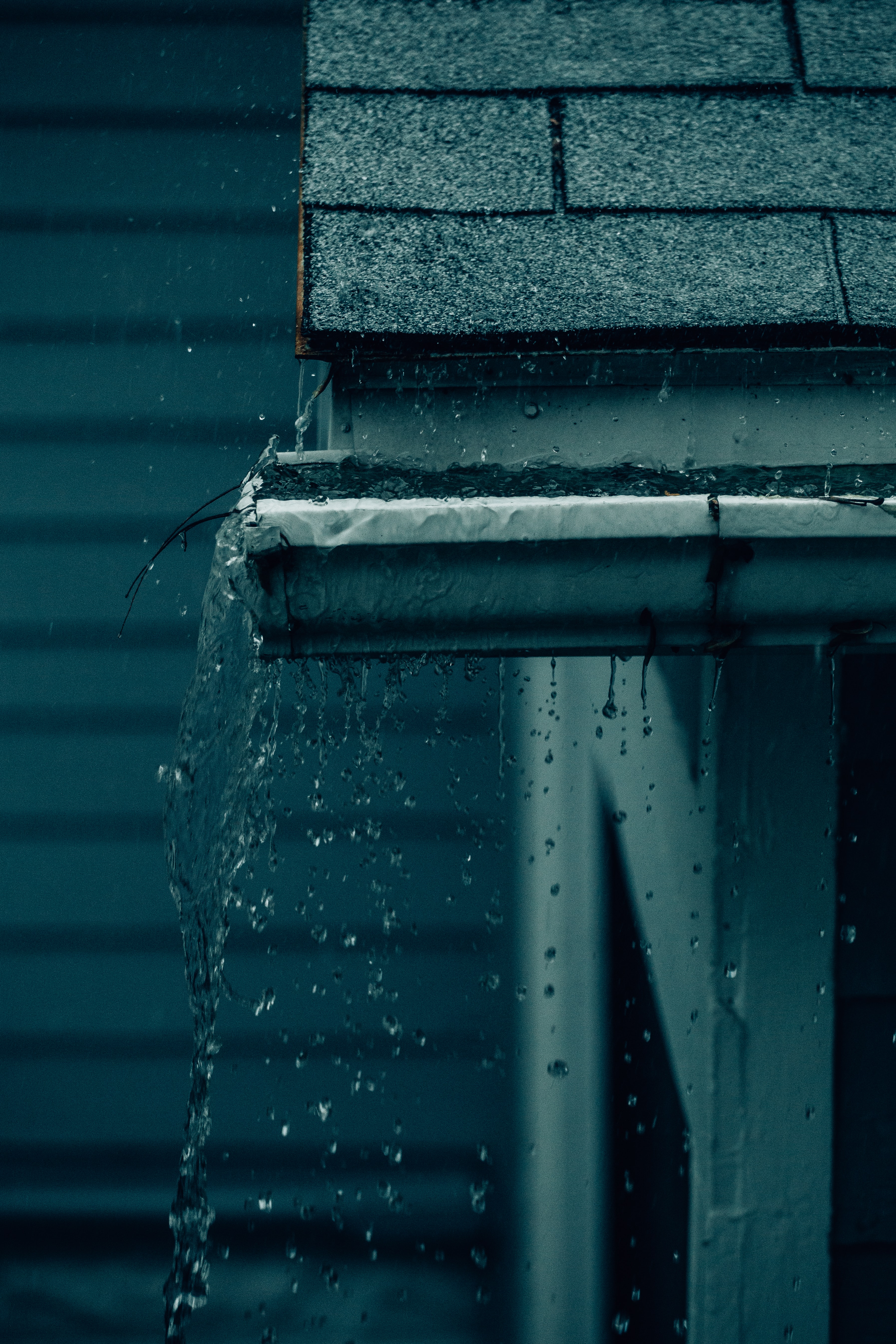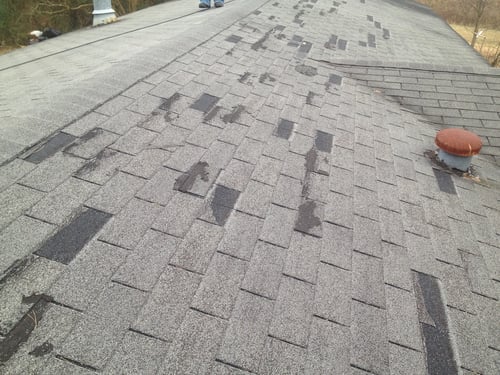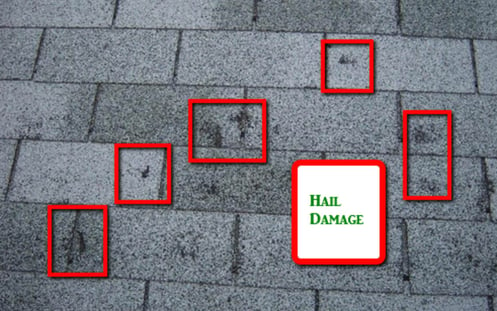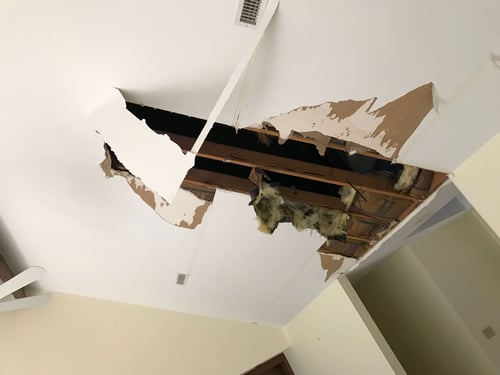
Extreme weather conditions are frightening enough as it is without the added stress of needing a roof repair due to the damage that it caused. In your busy life, there’s never a convenient time to find out your roof needs repair, but If you check your roof for storm damage after severe weather, you may be able to minimize that pain.
RoofCrafters has been trusted by homeowners like you to repair and replace their storm-damaged roofs for nearly 3 decades. We’ve seen the best to the worst-case scenarios, but we know that with a little dedication and TLC, everything’s fixable.
Waiting for obvious signs of roof damage before you can check it may not be the best idea. Usually, by the time you see obvious damage, the problem has had enough time to grow and worsen. As a result, you could be facing much bigger and more expensive problems such as roof and interior damage repairs if you’re not diligent.
Checking your roof for storm damage after severe weather hits can help you maintain your roof in good condition and save you some money in the long haul. If you’re curious about the proper way to check your roof for storm damage, you’re in the right place. In this article, you’ll learn about the signs of roof damage and what type of weather causes it, and how to check and see if your roof has been affected. Let’s jump right in!
How to Check Your Roof for Storm Damage
Usually, the rain on its own is not strong enough to cause substantial damage to a sound roof. However, when you add wind, flying debris, and a torrential downpour to the mix, the roof may take a serious hit. In some cases, the damage can be obvious, but you should still take the time to check as some signs are hard to spot right away.
A good roof is meant to withstand the elements, however, some storms are more intense than others. There are many signs to look for when you believe there may have been damage to your roof. As always, safety is a priority when checking for storm damage. We don't recommend you climb on the roof, so try to assess roof damage from ground level if you can.
If possible, you can use binoculars from the ground to see more clearly. If in doubt, call a professional roofing contractor to come to assess the roof damage. In the meantime, here are some warning signs your roof may have some storm damage.
Wind Damage
More than half of all severe weather events cause wind damage. Any wind exceeding 50 miles per hour is classified as damaging wind. Also, you have what's called “straight-line” winds which are thunderstorm winds that have no rotation and can reach well over 100 mph. Such significant wind can cause shingles to fly off the roof deck, and missing shingles can lead to leaks and other interior damage.

You may not easily spot other wind damage, especially if the adhesive seal that provides a water-shedding surface is broken. Calling a professional roofing contractor to help you detect other wing damage will give you an idea of your roof condition. When checking your roof on your own, always follow the proper safety precautions.
All manufacturers are transparent about the wind warranty on their shingles, but comparing different manufacturers' wind coverage can help you select your shingle selection on a new roof. If the winds that caused the shingle damage were above the manufacturer’s wind coverage, you’ll need to file an insurance claim. Otherwise, contact the shingle manufacturer to file a claim. Although roofing manufacturers cover severe winds in their warranty, the estimated wind speed a roof can endure is based on a newly installed and well-maintained roof.
Potential signs of wind damage:
- Missing shingles. Cracked or peeling shingles are at major risk of being lost once wind speeds exceed 60 miles per hour.
- Visible Granule Loss indicates where the shingle seal was broken. Granules rub off as shingles flap in the wind and come into contact with other surfaces.
- Visible Water Infiltration. Most visible leaks that penetrate through to the ceiling of the house are the direct result of wind damage.
Hail Damage
Hail is a form of solid precipitation that happens in strong thunderstorm clouds at temperatures of 32°F or below, the same range at which snow is possible. It consists of balls or irregular lumps of ice, each of which is called a hailstone. Usually the most damaging are between 1 inch and 1.75 inches in diameter. While hail is rare in Florida, it’s not impossible.
The hailstones are compact and can punch through solid objects. Hail can bruise a shingle causing an indentation that may be hard to spot. Those balls of ice can crack the shingle allowing water to infiltrate over time. After a hailstorm, you may need the assistance of a professional roofing contractor to determine the scope of the damage. If you have hail damage, you will need to file an insurance claim.
Usually, hail is not something that you can miss. A hail event is typically significant in terms of widespread damage, and you may not be the only one affected in your neighborhood.

Potential signs of hail damage:
- Missing or Hail-Damaged Shingles. Hail damage can result in the immediate loss of shingles that were intact before the storm started. Look for cracks and indentations in the shingle where granules are missing.
- Clogged or Broken Gutters and Downspouts. A large pile of granules at the end of your downspout. A small amount is normal, especially on new shingles.
- Other hail damage around the house; dents on cars or other items on your house or in your yard.
- A specific pattern of small round-shaped divots on the edges of the shingles.
Fallen Debris
After strong storms, you may notice loose debris around your home such as yard waste, outdoor furniture, and so on. This could indicate that something struck your roof during high winds. As some storms get stronger, tree branches or other fallen debris can land on your roof. Clear debris away as soon as you can to minimize risk and look for characteristics of broken shingle patterns to assess impacts.
Some items are small and won’t cause an issue. other items are so large that may cause serious damage. In this case, use your best judgment. You may need to have a professional roofing contractor inspect your roof to see the amount of damage.
Potential signs of debris damage:
- Visual identification of debris on the roof deck.
- Missing shingles.
- Cracked shingles.
- Roof debris on the ground.
Water Damage
Water damage can happen when high winds uproot a tree which then falls onto your roof causing the rain to get into your home. It’s not just water from high wind that damages a structure. Even a small amount of standing moisture from a storm can lead to serious damage. That is the reason why checking your home and surroundings carefully after winds die down is important.

Signs of water damage include:
- Damage to roof supports or accents. This may not always be obvious. Check the areas where the water seems to pool during and after heavy rain even if the shingles appear to be completely intact. Also, check the flashing around your vent pipes and chimney.
- Visible attic issues and moisture. Check your attic for any signs of moisture penetration that can disclose leaks.
How Can I Navigate Roof Storm Damage?
Now that you know what storm damage looks like, you should have a pretty good idea of what sort of damage you may have. The next step is treating your roof. You should first start by calling a professional roofing company, and setting up an inspection with one of their contractors.
Your contractor will conduct a thorough walk-through and figure out the extent of your damage. From there, you’ll be given a repair estimate, and before you know it, your storm damage will be fixed before your very eyes!
If you’re ready to take the plunge and get your storm-damaged roof repaired, drop RoofCrafters a line. As soon as you submit your form, one of our friendly experts will give you a call to set up a time for your inspection. If you’re not quite sure if you need an inspection just yet, or have a few remaining questions, feel free to browse the extensive resources in our learning center.
At RoofCrafters, our mission is to provide job opportunities for others to thrive and grow while making a meaningful impact within our communities.



